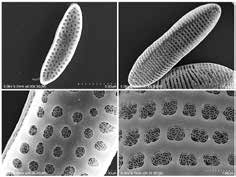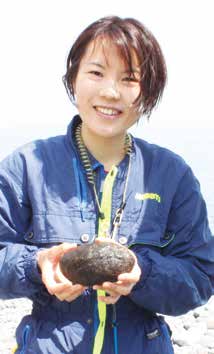Research Area : Applied Enzyme Chemistry
Effects of intermittent reproduction on forest regeneration in Fagus crenata
Fagus crenata is one of the characteristic tree species that produces a large amount of flowers and seeds every few years. Environmental factors, such as temperature and nutrient content, play a role in this intermittent reproduction mechanism, but it is not clear how seed production will be affected by recent climate change. Seed production is not only an important factor underpinning forest regeneration, but it also provides food for the diverse organisms that survive within forest ecosystems. We are attempting to clarify how this intermittent reproduction contributes to seedling regeneration through analysis based on long-term surveys.
Effects of intermittent reproduction on forest regeneration in Fagus crenata
 Fagus crenata is one of the characteristic tree species that produces a large amount of flowers and seeds every few years. Environmental factors, such as temperature and nutrient content, play a role in this intermittent reproduction mechanism, but it is not clear how seed production will be affected by recent climate change. Seed production is not only an important factor underpinning forest regeneration, but it also provides food for the diverse organisms that survive within forest ecosystems. We are attempting to clarify how this intermittent reproduction contributes to seedling regeneration through analysis based on long-term surveys.
Fagus crenata is one of the characteristic tree species that produces a large amount of flowers and seeds every few years. Environmental factors, such as temperature and nutrient content, play a role in this intermittent reproduction mechanism, but it is not clear how seed production will be affected by recent climate change. Seed production is not only an important factor underpinning forest regeneration, but it also provides food for the diverse organisms that survive within forest ecosystems. We are attempting to clarify how this intermittent reproduction contributes to seedling regeneration through analysis based on long-term surveys.
Study on the mechanism of environmental flower sex determination in plants and its adaptive significance

More than 90% of all seed plants do not have sex chromosomes and produce a combination of hermaphroditic, female, and male flowers in an individual plant. However, the sex determination mechanism of individual flowers remains unclear and how environmental factors (e.g., day length, temperature, and nutrient status) act on sex determination. We are trying to elucidate the mechanisms of environmental factors, especially shortday conditions and nutrient status, that induce hermaphroditic flower in relation to flower initiation, using Commelina communis f. ciliata. We also examine the adaptive significance of these environmental conditions as signals of floral sex determination and attempt to predict future climate change impacts.


